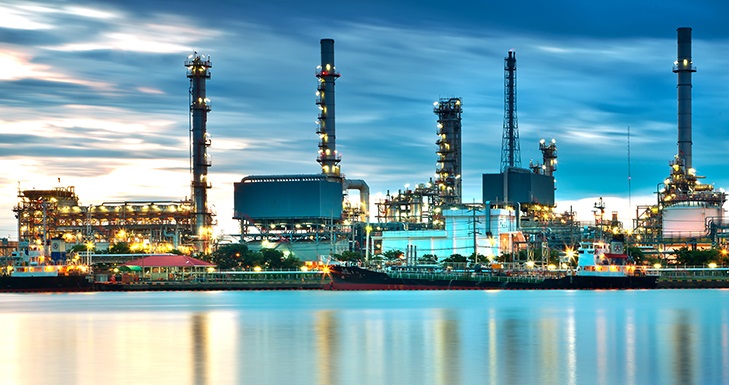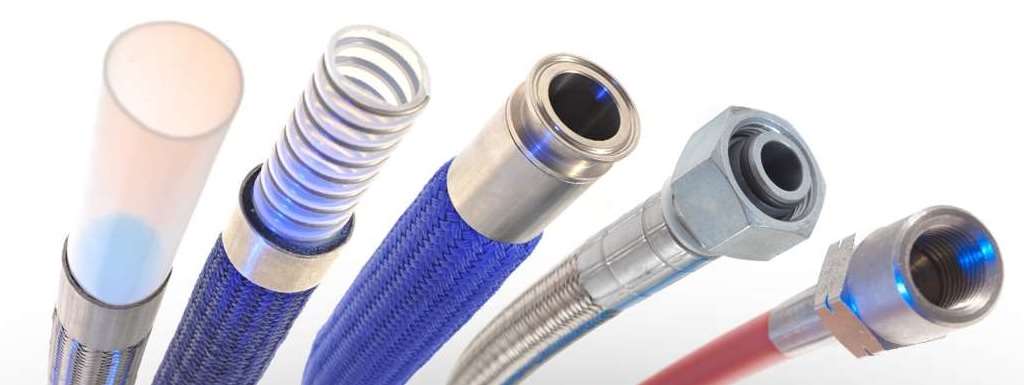Chemical

Features and benefits of PTFE
- Ability to handle a wide temperature variance: -60⁰C to +260⁰C
- Not affected by heat aging
- Compatible with a very wide range of chemicals
- Low permeability rates
- Not affected by Ozone or UV exposure
- Low co-efficient of friction—better system efficiency due to lower pressure drops
- Non flammable
- Superior flex fatigue life
- Low volumetric expansion
PTFE, with its wide operational temperature range of -60⁰C to +260⁰C , is ideally suited to the rigorous demands required by chemical manufacturing, storage and distribution. In addition, the compatibility of PTFE with a very wide range of chemicals and gases makes it THE perfect “select one” hose that ensures safe operation and protection of the environment.
Flexible PTFE hoses replacing pipework at the connection between the pipework and reaction vessel, centrifuge, loading cells or pumps, are sufficiently flexible to take relative movement and thus the resulting strain on the vessel is negligible, where stainless steel pipework can crack or does not provide the movement needed.
PTFE hoses do have self-cleaning capabilities, compared to flexible stainless steel hoses which have deep annular convolutions that can trap chemicals and prevent them from draining away. Also, in terms of flex fatigue, PTFE hoses are superior to flexible stainless steel hoses. This prevents pin-holing and stress cracking due to chloride.
Compared to rubber and other plastics, PTFE will not age and is resistant to UV and Ozone. PTFE has the lowest coefficient of friction of any solid known. No-sticking consistently ensures low pressure drops during service.
